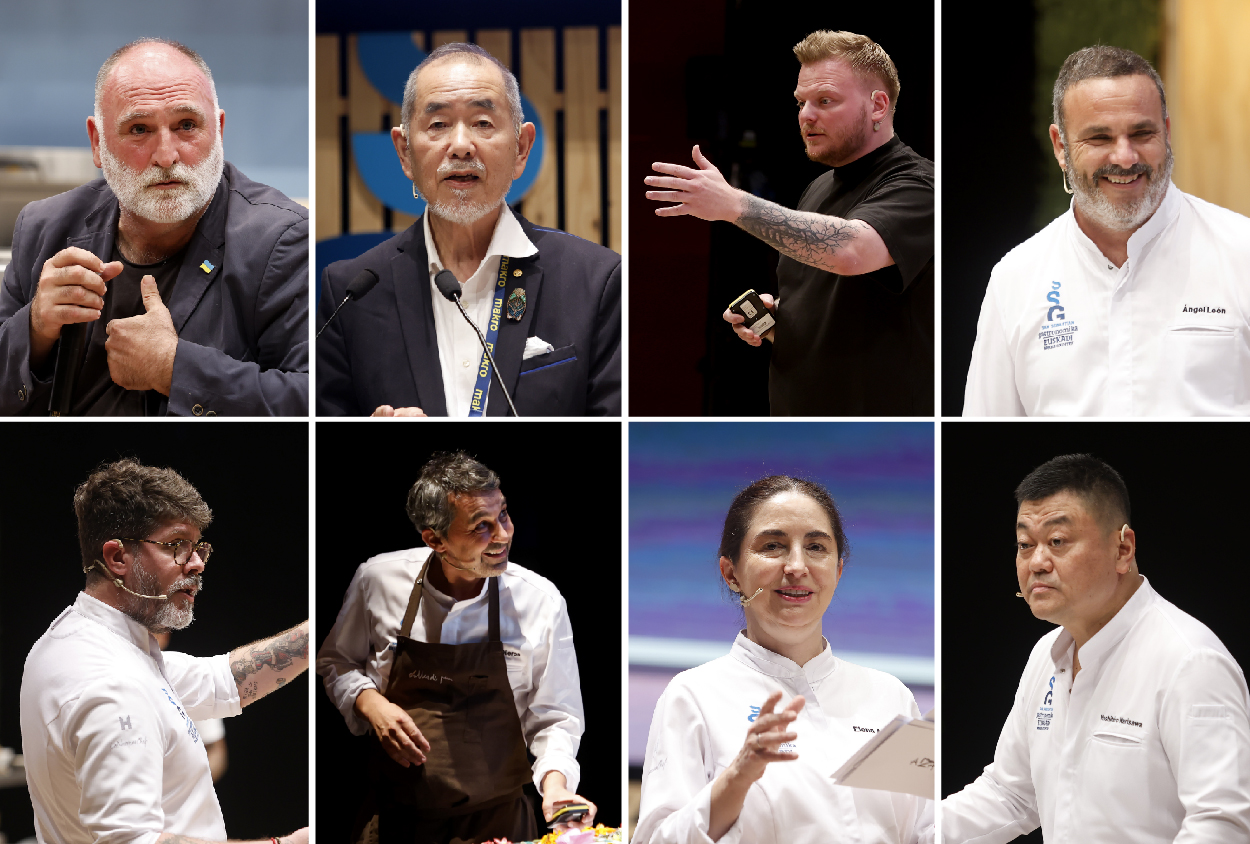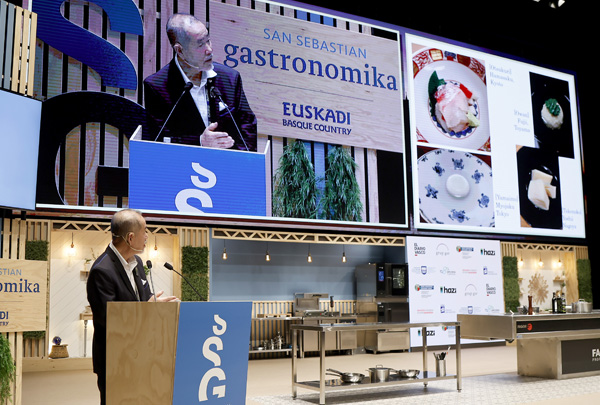News
The Mediterranean prawn in the hands of three experts

One of the main events on the first day of San Sebastián Gastronomika was the threesome talk, sponsored by Alimentos de España, by chefs Quique Dacosta (Quique Dacosta*** Dénia, Alicante) and Joan Roca (El Celler de Can Roca*** Girona), with Benjamín Lana, the brand new congress director, for a mise-en-scène of some of the chapters of ‘El libro de la gamba roja’ (Planeta Gastro), a major vademecum created by them, with an in-depth survey of this new gastronomic icon of the Mediterranean from all its perspectives - the gastronomic, the scientific and the economic.
Benjamín was tasked with providing those present with some data on physiology, habitat and fishing techniques in connection with the red prawn, and claimed "there isn't much difference between the Denia and Palamós varieties, because the larvae are dragged along by currents for thousands of miles, and so it's the way they are handled afterwards that's more important than their origins, and also other aspects such as the ovarian maturation of females when they are caught". Benjamín feels that one of the most important issues for the fishing sector is self-managed sustainable red prawn fishing, because "it accounts for up to 40% of port earnings, and generates more than 100,000 jobs, thereby guaranteeing the survival of fishing guilds", he argued.
From the book, Quique Dacosta cooked up three simple recipes based on one of his fetish foodstuffs, of which he is definitely one of the best exponents. He kicked off with prawn cooked in sea water “at 62o to coagulate the protein in less than 2 and a half minutes, and quickly cooled to 12 degrees before serving as-is. The best way of sampling it, as I demonstrated at San Sebastián Gastronomika 25 years ago”. The second creation, known as "Spring", was a colourful dish of three infused prawn tail confits, served cold on "a royal made with the juice of the head and fashioned into a kind of creme caramel, along with an essence also made from the juice. and vegetables such as hibiscus, beetroot cubes, julienne kumquat, grapefruit threads, yuzu powder and leaves made from tuber corn starch. The third recipe was a prawn coulant in a crunchy ring, made from prawn stock, flour, milk and eggs.
Joan Roca, meanwhile, claimed "this product must be spoiled as it richly deserves. At Celler, we do all we can to find out what a product can give, discovering all kinds of applications to get the best out of it", and he further explained that "while around Denia they usually boil the prawn, in Girona we tend to grill and fry it more, but we also keep an eye on the temperature for the best possible coagulation". By way of examples, he went through another three of the recipes in the boom, such as "Toda la gamba", with grilled prawn, peeled and served along with a plankton sponge, a "velouté" made from the head, the legs, dehydrated and fried, citric caviar and powder from a belacan paste made with a powerful garum. The second recipe was intended as an explanation of the prawn garum, "with 8% salt and 0.2% of protease per kilo to accelerate fermentation of the protein", which he used to make a prawn velouté in rose-shaped slivers. The third recipe was the original "Dry Gambini", a prawn distillate "which extracts the soul, the volatile aroma or the essence of the prawn", in a cocktail glass with a peeled prawn on the side, and an amusing crunch with prawn and potato starch.




.jpg)
.jpg)

.jpg)
.jpg)


.jpg)









































